Porto School, B Side: Insurrectional Organization of Space
The following text on Mário Ramos and Fernando Barroso’s student work at the Porto School is excerpted from the publication Porto School, B Side 1968–1978 (An Oral History) (CIAJG & Documenta, 2014). Collages from the project are included in the exhibition At Play at Garagem Sul, Centro Cultural de Belém (28 September 2021 – 30 January 2022).
In 1975 the students Mário Ramos and Fernando Barroso developed a radical project, with a clearly ironic and provocative meaning. It is a project that has survived the test of time and which continues to disturb us today – due to its critical sense. This project, called the Insurrectional Organization of Space (as a provocation to the book The Organization of Space by Fernando Távora), provides a visual testimony that there was a third way of action in the school, that didn’t involve the (in)disciplinary idealism of ‘a refusal of architectural design’ nor the ‘pragmatic neorealism’ of the SAAL process.
Insurrectional Organization of Space by Ramos and Barroso presents itself as a critical view of all forms of political and ideological power, reflecting a precocious disbelief in the Ongoing Revolutionary Process (PREC) in favour of greater freedom, freedom of individual thought, willing to question everything, if necessary, from scratch. Its greatest critical dimension lies in its disciplinary context, by partially annulling one of the most emblematic areas of the city of Porto: the Avenida dos Aliados. It is a project that proposes to abdicate from architecture as a manifestation of power, its representative sense, in favour of a public space that, like a city in ruins in the desert, offers itself up for indefinition, free use, like a park, a game, in which even the equestrian statues are stripped of their honorary plinths in order to be able to ride forth in wandering, like situationist interventions.
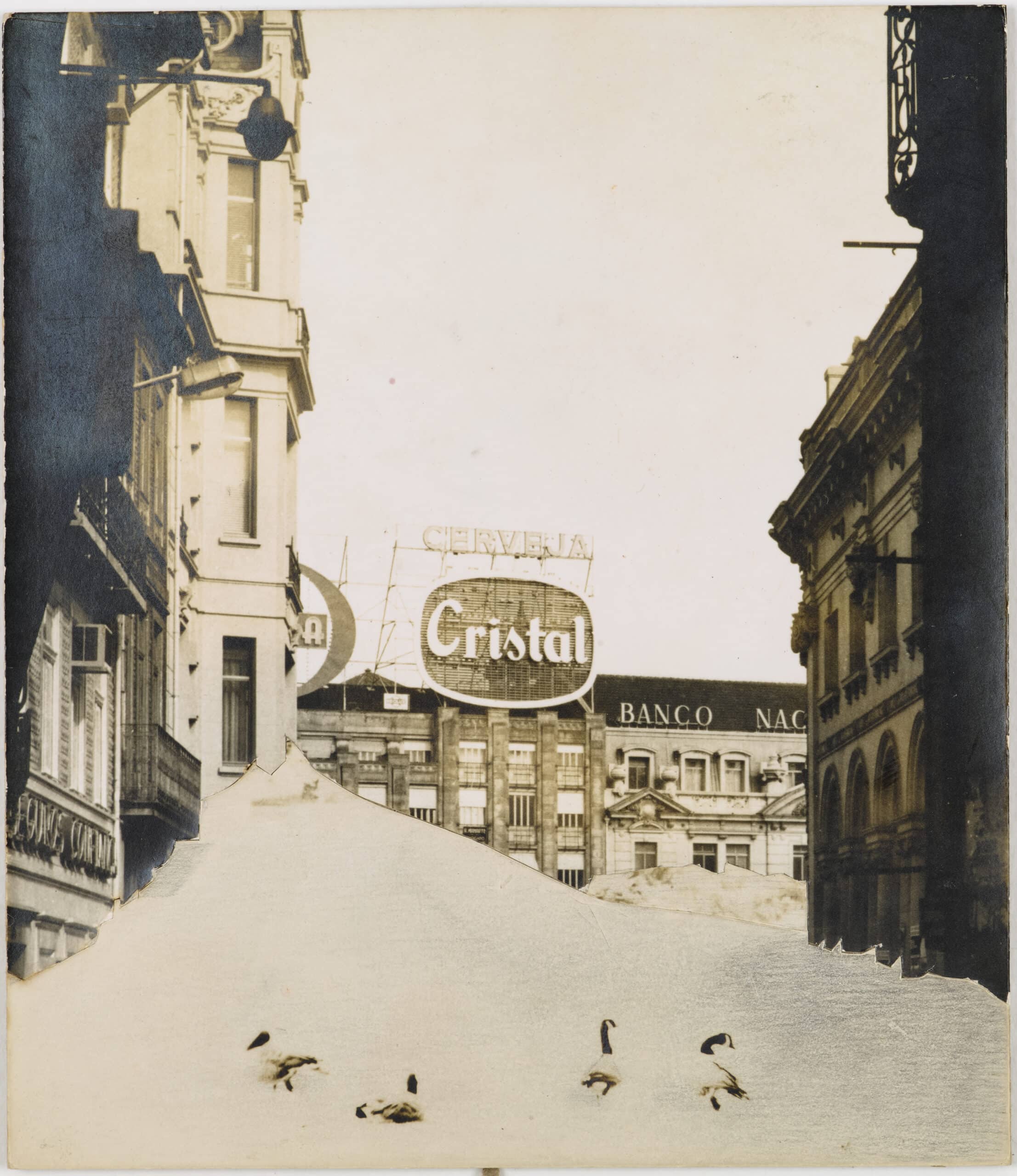
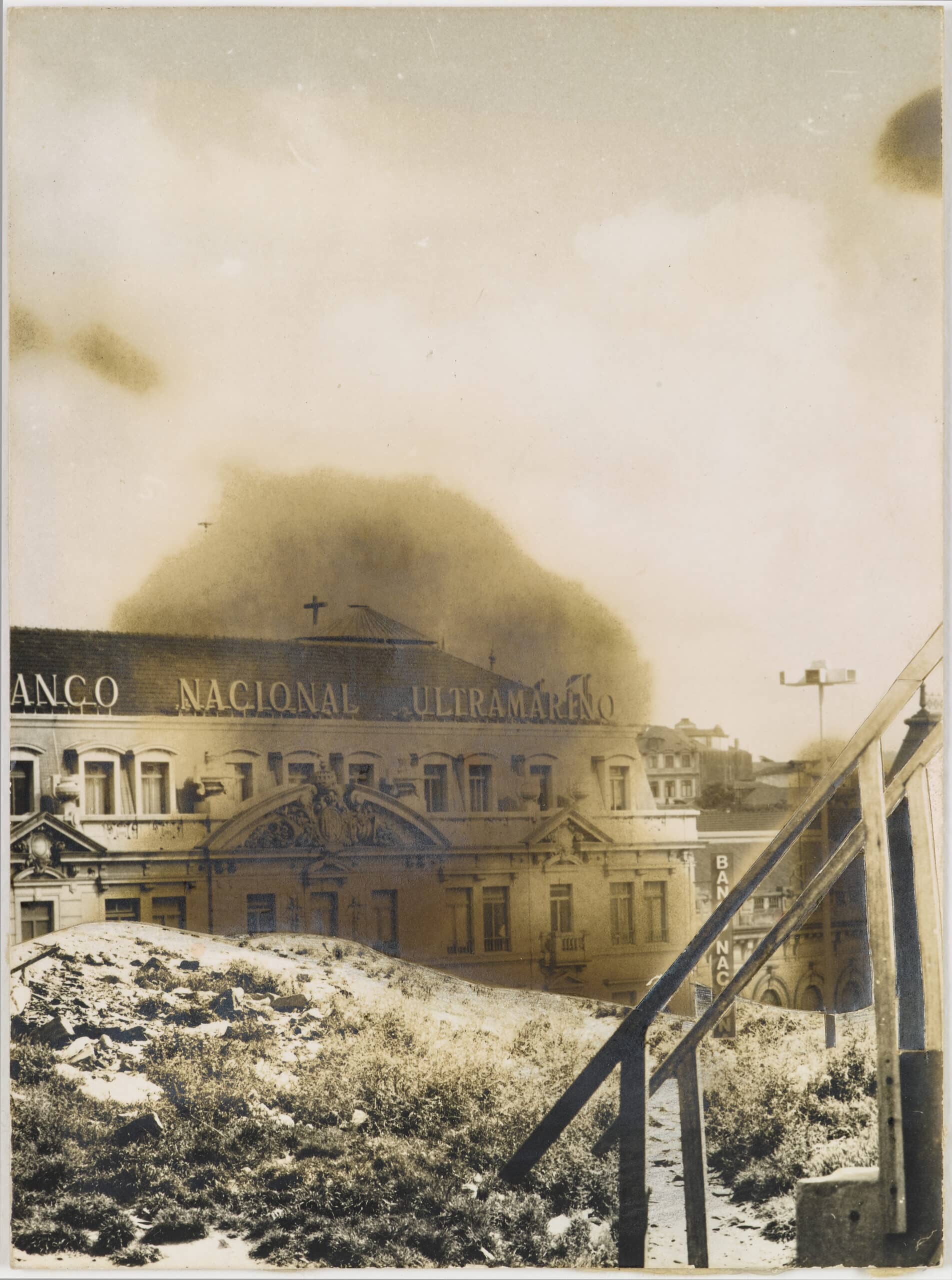
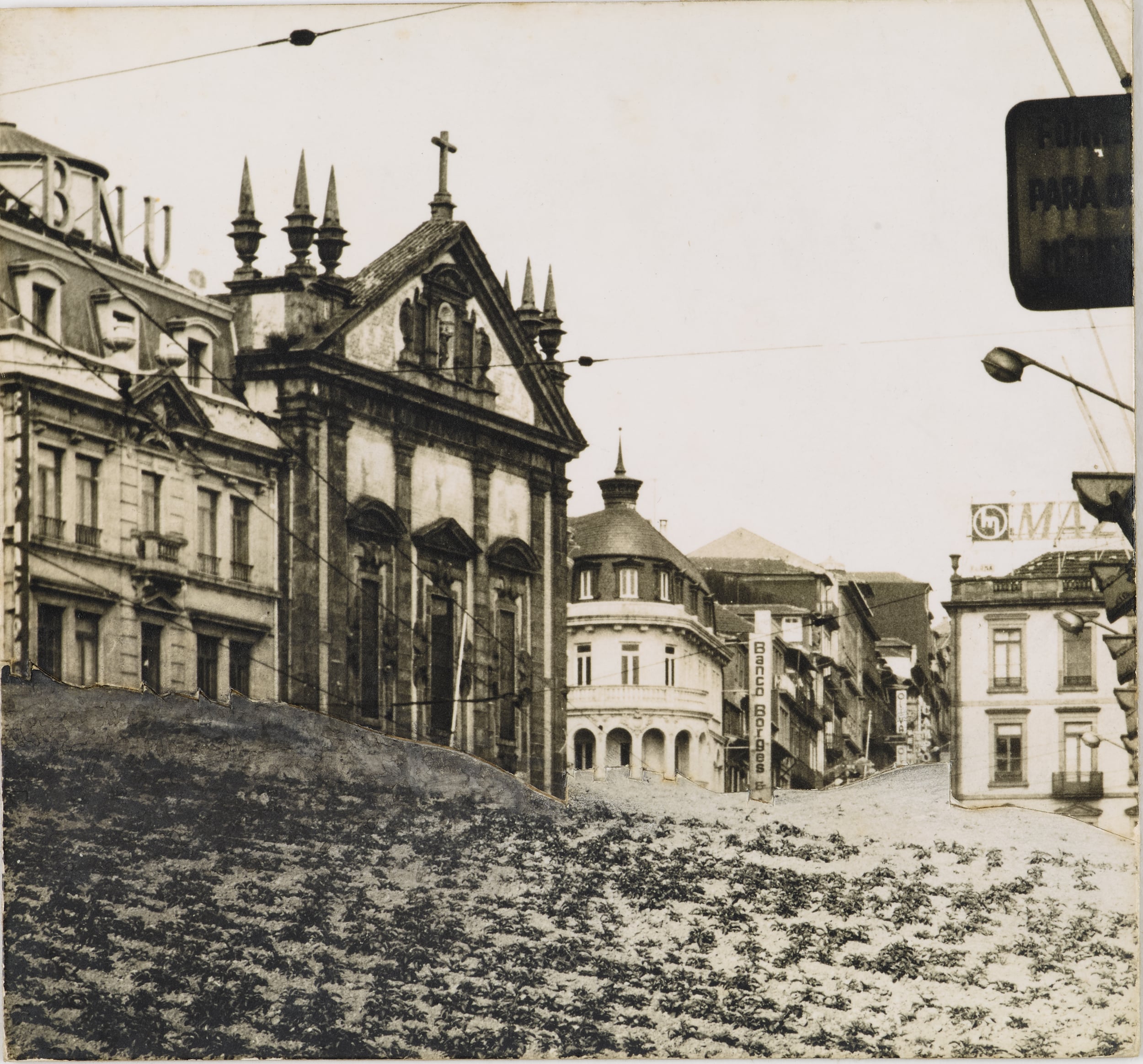
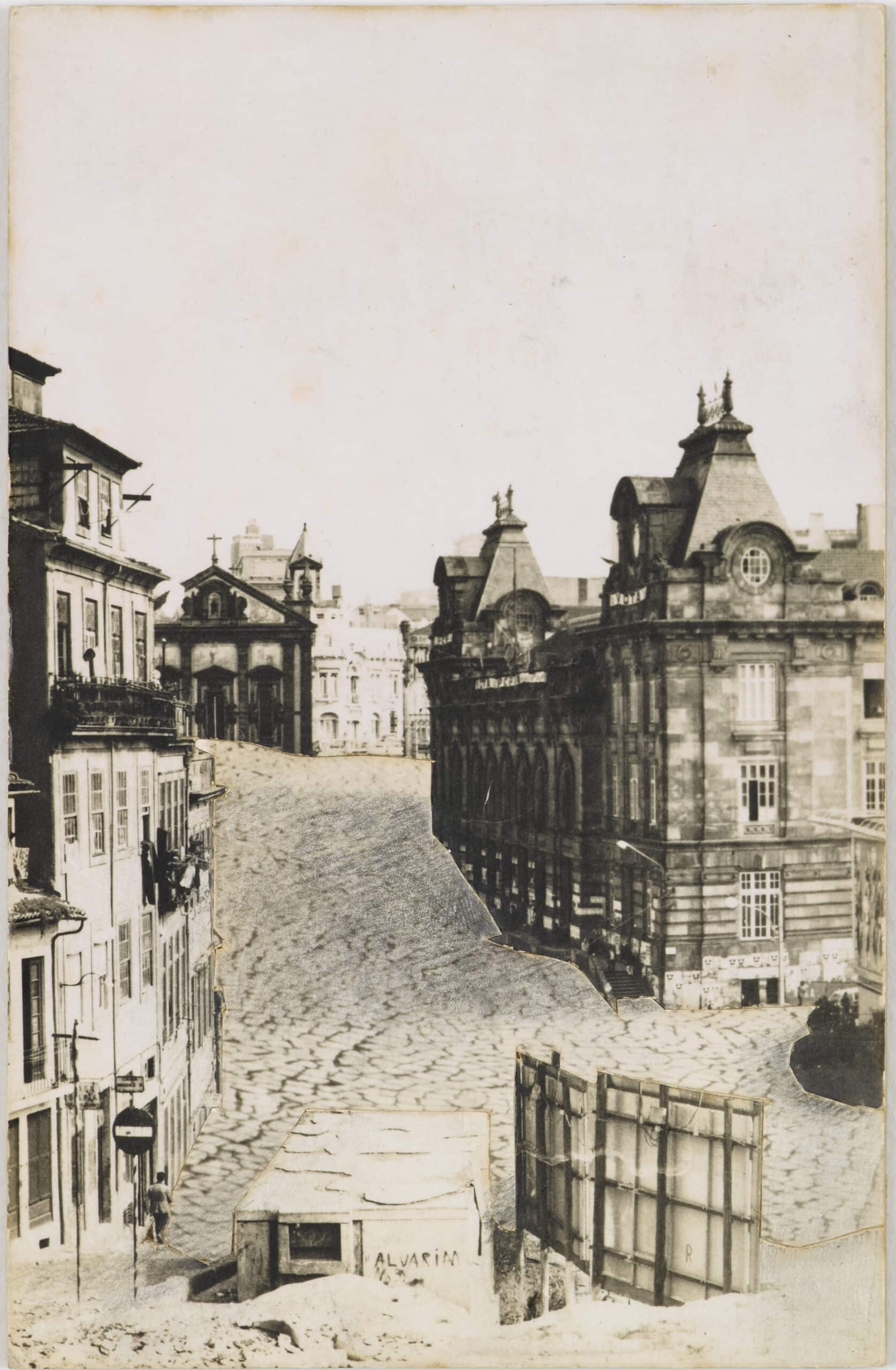
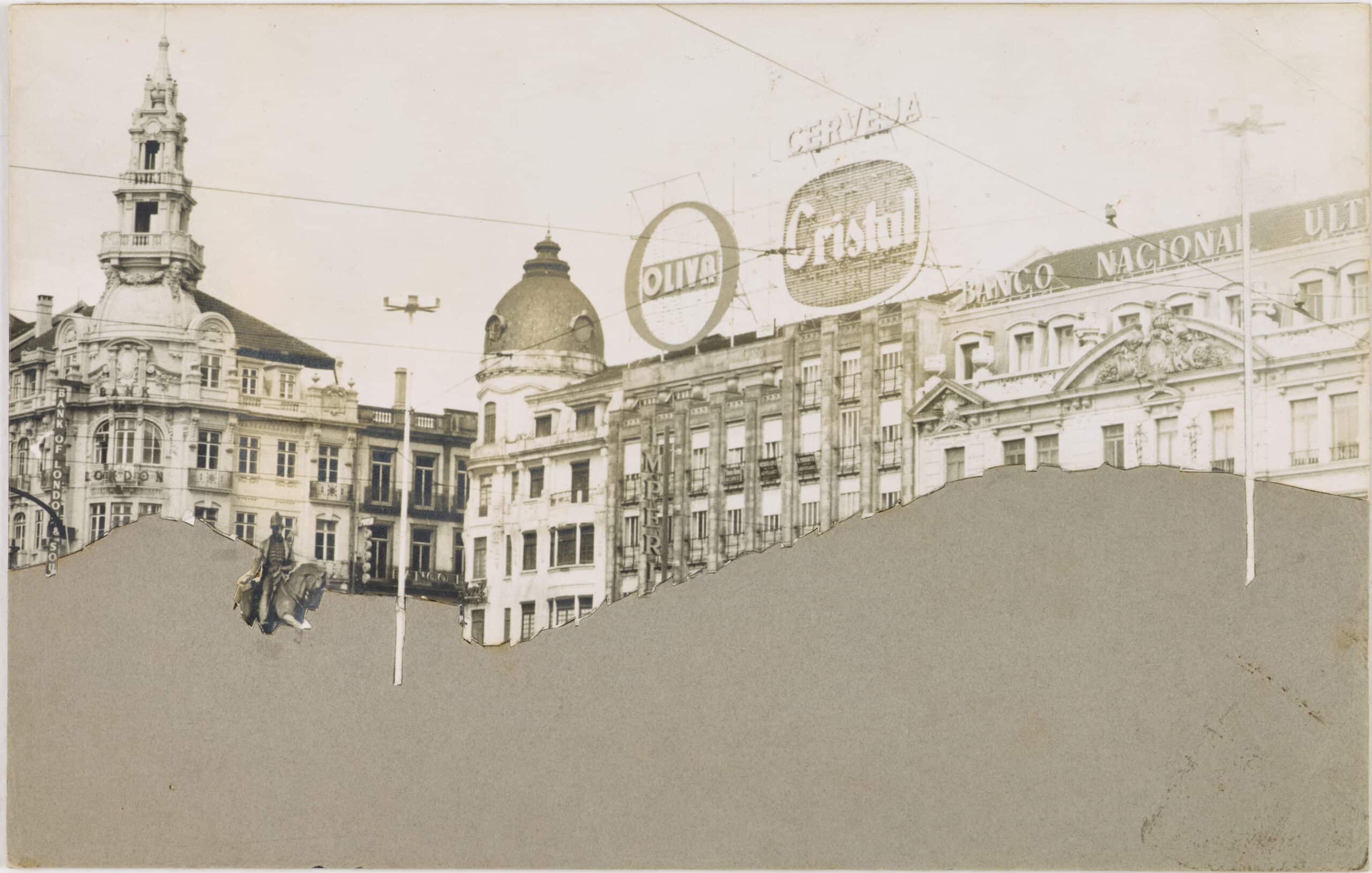
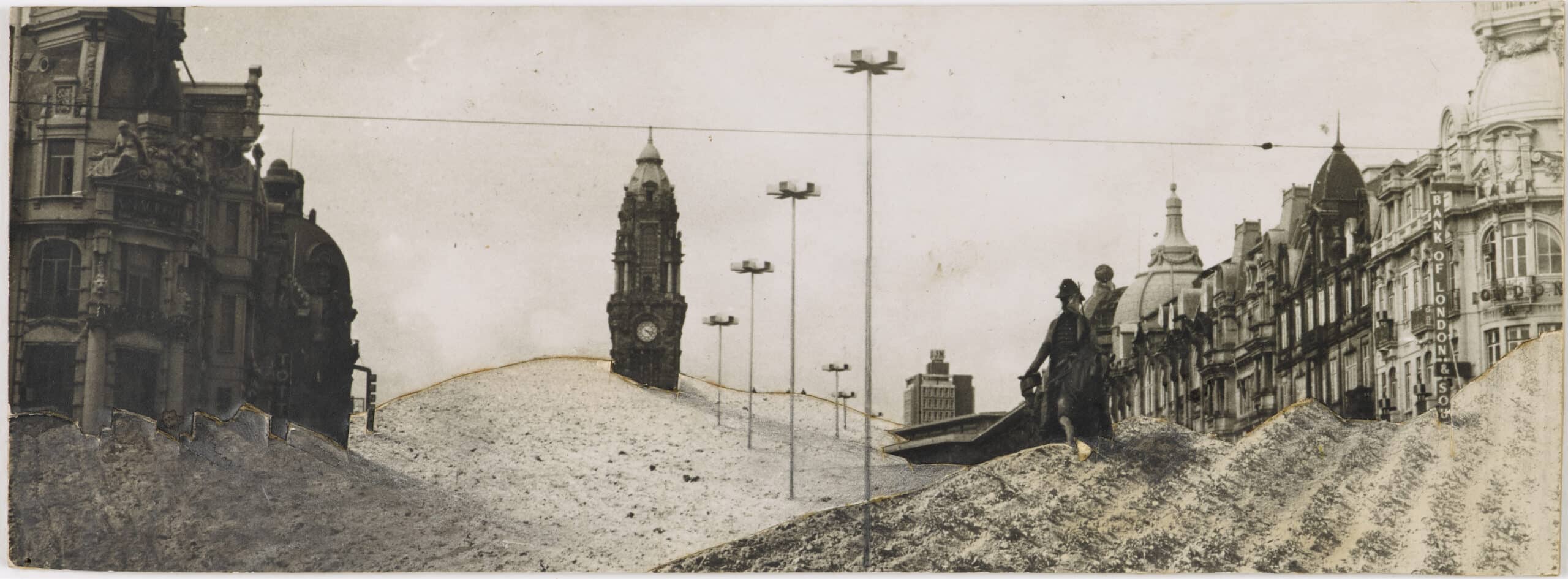

The proposal buries much of the public space around the Avenida dos Aliados, creating a new topography, an expanse of land, which covers most of the buildings, only leaving visible the highest elements – such as the tower of City Hall. This project, which was drawn in graphite pencil on tracing paper, based on rigorous surveys, is accompanied by photo montages, a formal descriptive memorandum (in an A4 dossier) and a comic book, with a summary text inserted in the speech balloons. [1]

The text of the comic book is ironic, almost cynical, somewhat disillusioned, but at the same time humorous. In one of the vignettes, which places a speech bubble next to the tower of City Hall, we can read:
There will be no more persecutions but we will punish and we will enforce justice. We won’t colonise peoples, but we will occupy them, in order to liberate them. We won’t exploit men – we’ll oblige them to produce voluntary work. War is called peace and everything will change, thanks to me and my geese. The restored tyranny will be renamed discipline and freedom. Each man’s misery is the happiness of mankind.
In 1975 this text could be interpreted as being ‘reactionary’. It doesn’t believe in the revolution and is aware of its limits; it believes and fears that the alternation of power is not necessarily a change in the mechanisms of power and its expression. It is a Situationist text, a détournement, fragmented, filled with quotes from Basic Banalities and Treatise on Living for the Young Generations by Raoul Vaneigem, The Society of the Spectacle by Guy Debord, The Urban Revolution, by Henri Lefebvre, and also the Songs of Maldoror by Lautréamont, The Foam of the Daze by Boris Vian, or Alice in Wonderland by Lewis Carroll, amongst other Surrealists and Dadaists texts. [2]
Fernando Barroso explains that he and Mário Ramos didn’t really believe in the revolution, or at least not in that revolution, and feared that this would become another form of oppression. They feared that collective ideals would subjugate individual rights and freedoms. This was also the reason that made them suspicious of their Marxist-Leninist colleagues and teachers. They were closer to the Trotskyists and the situationists and participated in many street demonstrations. But the struggle of the two students had a more ‘libertarian’ dimension. It focused on experimentation, the legitimacy of the creative act, and essentially a struggle with more humour and ‘partying, in the sense developed by Henri Lefebvre’ This sense of humour was difficult to understand by the ‘Maoists’ who took themselves too seriously. In the midst of the SAAL process, and full social commitment, the Insurrectional Organization of Space virtually went unnoticed, if not to go so far as saying that the project was simply ignored, due to caution or distrust.
In Insurrectional Organization of Space no one is spared, the narrative discusses politicians, priests, intellectuals, pederasts, police officers […] all under a topography that evokes the imminent end of civilization. It is a landscape that features an expanse of land, which can be transformed into a beautiful hay field but also into a surface of mud as if there is no possible redemption. It is therefore a difficult project to classify. It doesn’t transport the optimism of utopia, nor the pessimism of dystopia, so perhaps it’s precisely here that we discover its timeliness: uncertainty before troubled times.
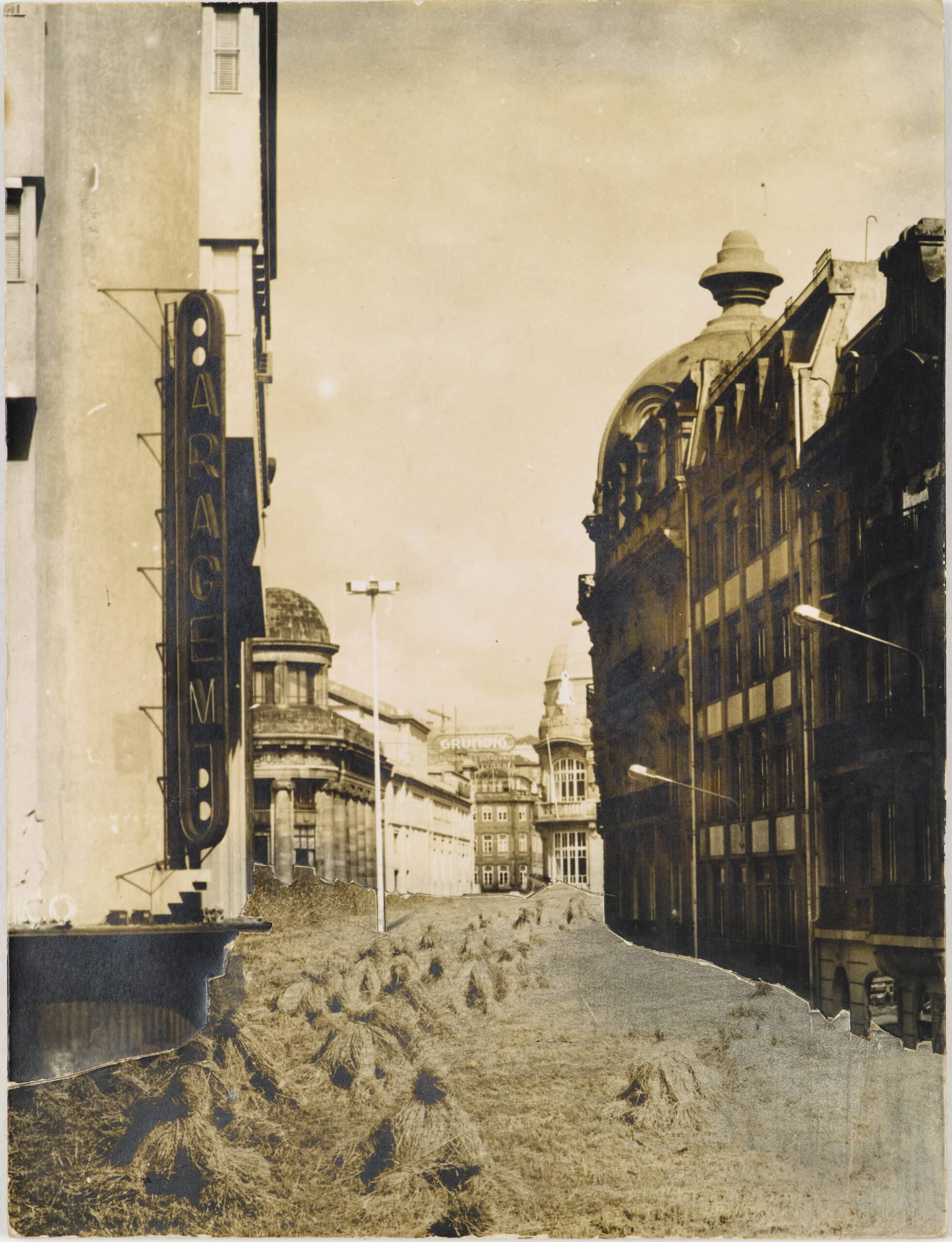
In this project, there’s an excessive gesture of ‘anti-urbanism’, a critical intention towards urban planning as the expression of a dominant power and simultaneously the radical claim of the city as a mirror of the individual’s action. In a text written on 15 April 1975, clearly inspired by Situationism, Mário Ramos and Fernando Barroso wrote:
as established in the motivations that led us to a work of this kind, we reaffirm our conviction that the objectives that guide it – to create situations that contribute to a radical modification of the current conditions of domination that characterise life and constitute the preparation of a society that will give man his true identity – can only be achieved by stimulating the individual to exercise his imagination and creativity in appropriation of space, in the revolution of everyday life.
The graphic expression of the mode of communicating this project should also not be ignored. The genre of comic books can, on the one hand, evoke a specific popular culture and draw closer to a broader audience, but the content of the text is not at all patronizing – it is unquestionably erudite and ironic. The contrast distances the graphic language from the textual language, thus making it noticeable that the genre is used as a disciplinary provocation towards the conventional representations of an architectural project. In other words, anti-urban planning – an anti-project implies anti-representation. Eventually, it is the belief that every revolution implies a new language. In this sense, we can question the reason for the simultaneous representation of traditional layout plans, cross-sections and elevations, but again this gesture is entirely provocative because the expression of rigour and investment in the architectural design expresses an ironically technical dimension. After the time invested in these drawings, with all the contours drawn, it is difficult to ignore them, i.e., this is also a legitimizing mechanism of a thought that does not want to be confined to superficial reverie. The photomontages also play a specific role in the expression of a certain plausibility. They are the imaginary universe made possible, enabling us to accurately locate the place of action. Starting from perspectives that all inhabitants of Porto can easily identify, the photomontages, when accompanied by text balloons that establish a dialogue with us, make us believe that the action already occurred in the past. A simulation that will enhance the plausibility of the narrative, affirmed in its direct relationship with the project. In other words, these superimpositions of text and image are in essence the superimposition of the user with the project, the evocation of the appropriation of the public space by the citizen.
All these graphic elements will lead us to conclude that this is certainly not a project in which there was any ‘refusal of architectural design’, on the contrary, here design is only questioned as a form of representation, in its relationship with the content, therefore acquiring various forms, all with a specific purpose.
The Insurrectional Organization of Space project was clearly swimming against the tide at ESBAP, which followed a ‘neorealist’ mode, striving to respond to the primary needs of the revolution. The project by Mário Ramos and Fernando Barroso was more in tune with what was happening abroad, either under the influence of a critique of everyday life, influenced by Henri Lefebvre and Guy Debord, also with some influence of Pop culture, that we recognise in the Archigram or in a more political and provocative aspect of the Superstudio. Safeguarding the due distances of an ideological nature, we can say that this was a time in which architects seemed to defend the ‘game’ and ‘idleness’ as values that should be countered to the strictly functionalist sense of the modern and capitalist city of the society of the spectacle.
Insurrectional Organization of Space didn’t resolve a problem. On the contrary, it created a problem: opposing itself to the image of functional urbanism, it claimed the city as a playground, a field of sharing, a battlefield, which begins by mischaracterising the representativity of the architecture of power and its monumentality, in order to assume itself as an alternative to everyday life, dominated by the work routine and the ambiguity that still exists between ‘having’ and ‘being’.
Mário Ramos and Fernando Barroso had no intention or expectation that they would be able to build the Insurrectional Organization of Space one day. This project was considered to be solely an instrument that aims to shape and give visibility to certain ideas. We cannot fail to evoke, in this context, a number of projects developed by the Superstudio, at the beginning of the 1970s, in which it was proposed to ‘save’ Italy’s main historical centres such as: making all the buildings around the Tower of Pisa also lean, in order to ‘fix’ the tower’s original defect; or cause flooding throughout Florence’s historic centre in order to ensure that only the dome of Santa Maria das Flores would remain visible, thus recovering a ‘primordial state’ of the city. [3] Although neither Mário Ramos nor Fernando Barroso referred to these projects from the Superstudio, it becomes difficult not to remember them, not so much due to formal questions (although they do resemble each other) but essentially due to the same purpose that implies the imaginary universe and the image as instruments of a discourse of social criticism. Beyond the traditional exercise of a formal and academic context, beyond the professional practice regulated by commissions, the Insurrectional Organization of Space aimed to think of architecture as an instrument of ‘cultural production’.

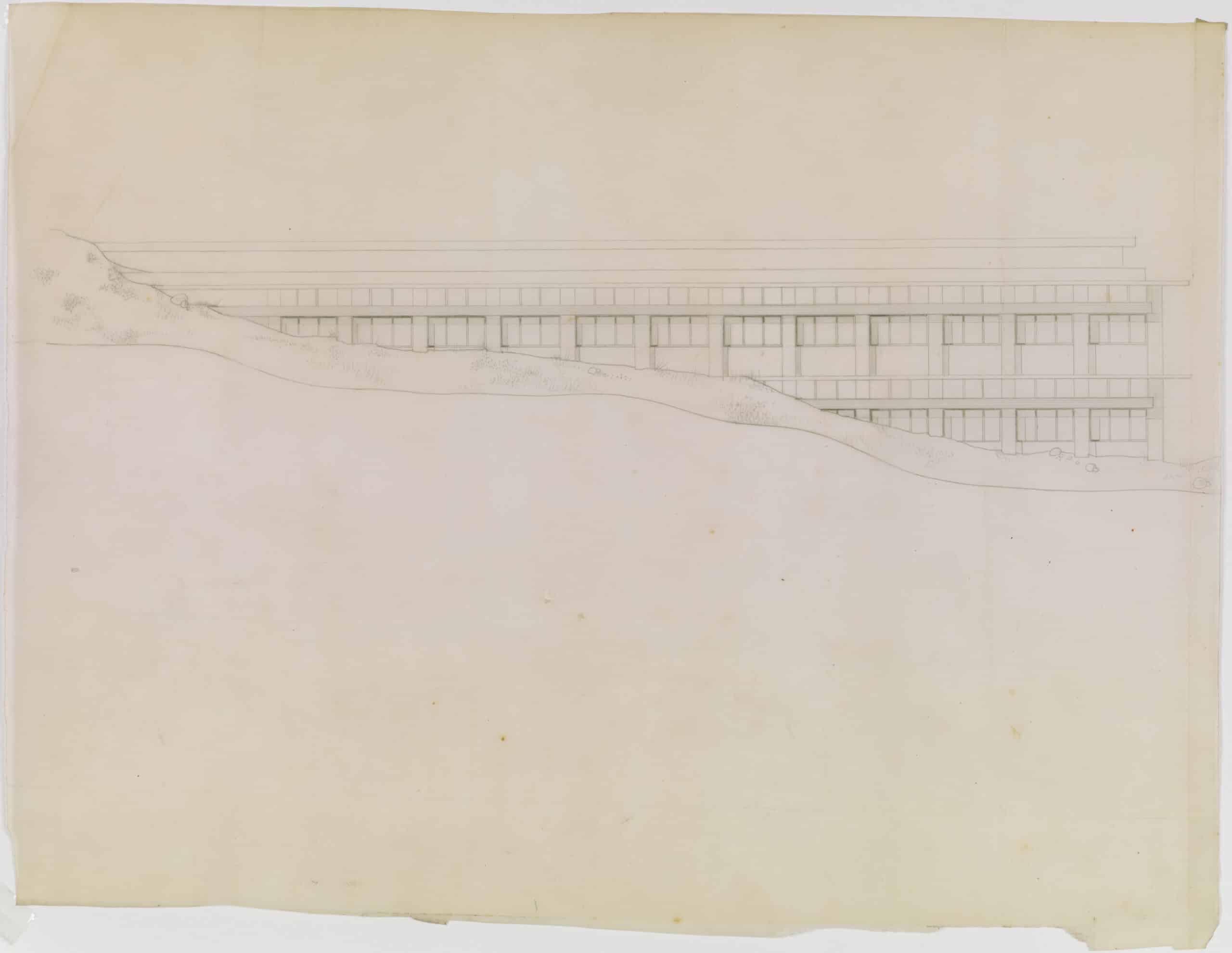

Notes
- Some of the items that were originally designed for this project have been lost.
- Not surprisingly, Mário Ramos, Fernando Barroso, Pedro Cavaco and Rafael Gaspar were responsible for overseeing the exhibition DADA 1916–1966: Documentation on the International Dadaist Movement held in the Árvore Cooperative in 1972.
- Superstudio, ‘Salvataggio di centri storici italiani’, magazine IN, no. 5, May–June 1972.
